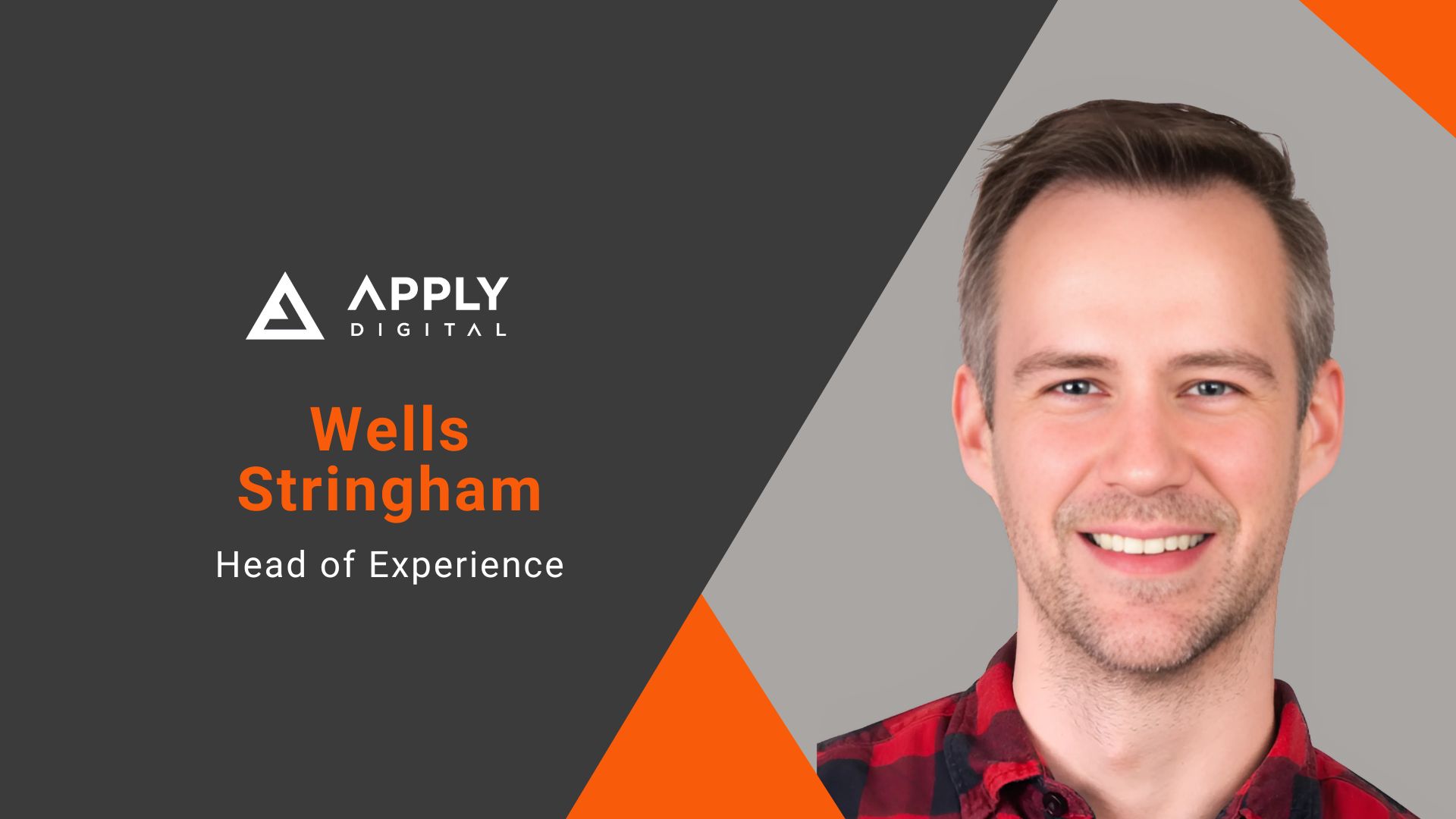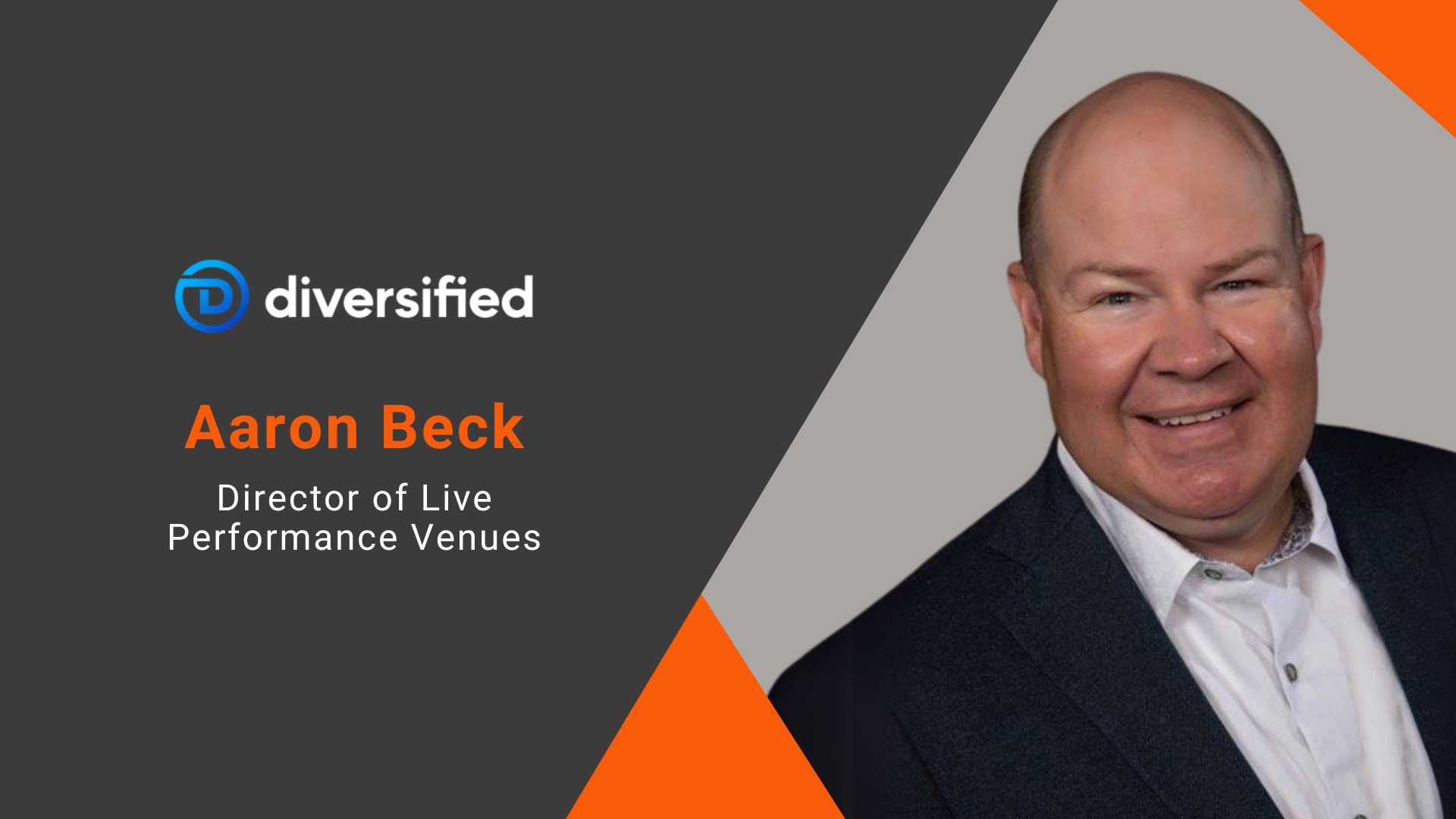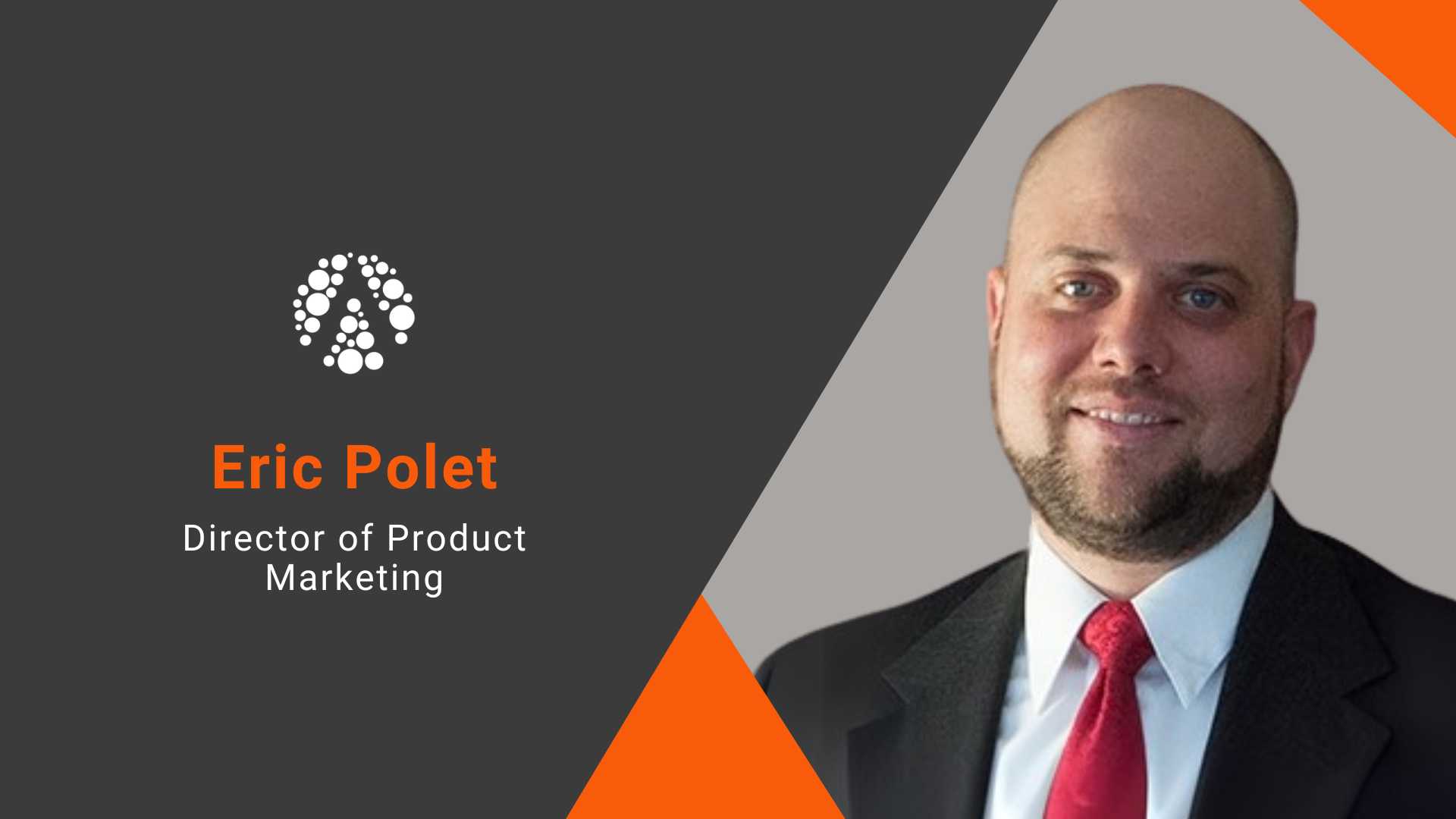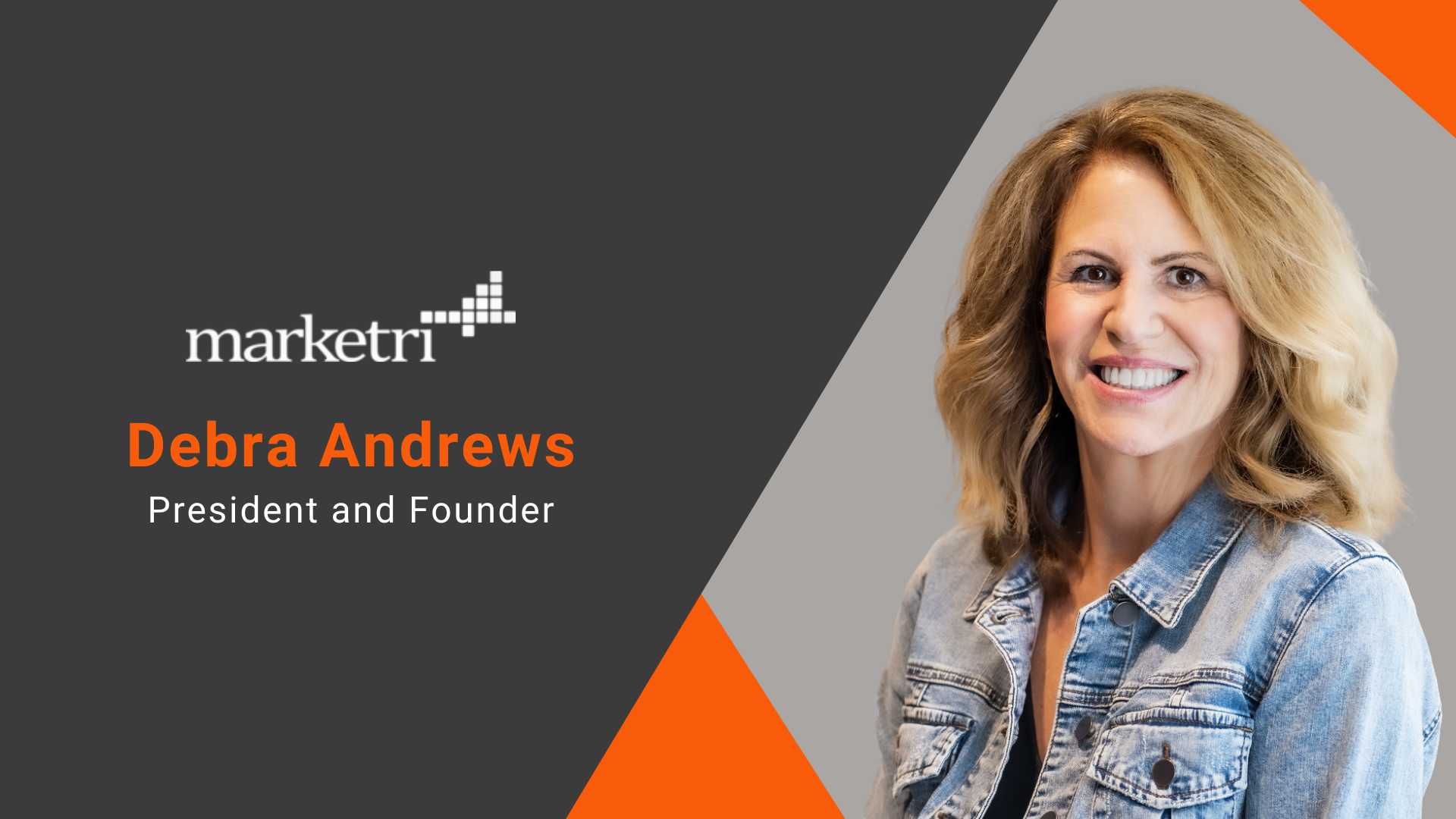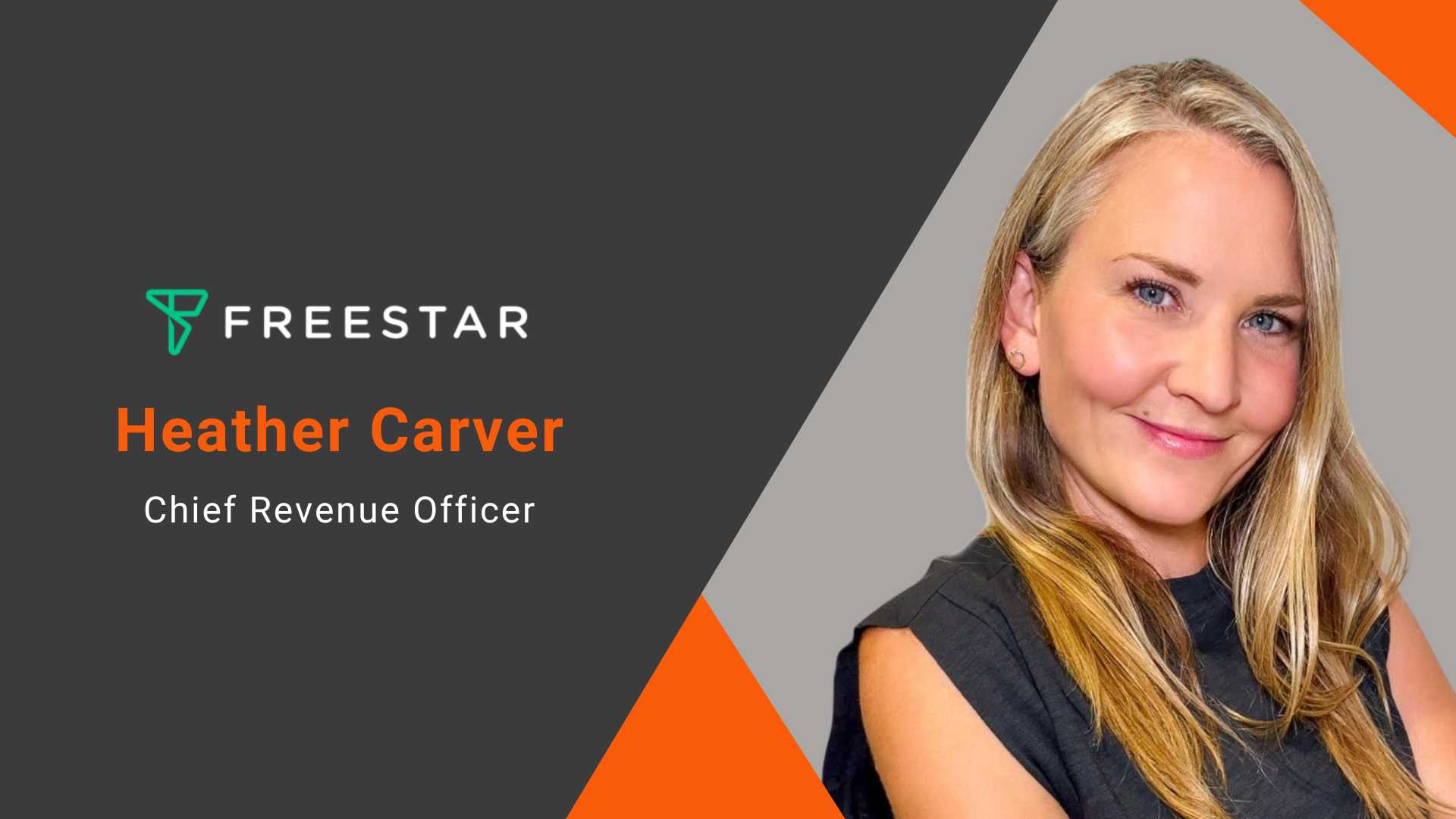
Interview
Left Field Labs | Building What’s Next in Tech
digital asset management 27 Aug 2025
1. In what ways do you evaluate the business impact of immersive experiences and experiential design when considering partnerships or product innovation?
Honestly, it's about asking the simplest question first: Are we making something people actually want to use and remember? With Twister AIR, success wasn't just about slick AR or clever AI integration—the experience had to resonate emotionally, bring people together, and feel authentic to the almost 60-year history of the game.
We track engagement metrics, but also measure how experiences change brand perception and drive deeper connections. For Twister, winning the Toy Industry's Game of the Year and two Webby Awards was proof we'd nailed the "why" behind the tech.
Impact also means real-world business outcomes. Did we unlock new demographics for the brand? Boost affinity? Drive meaningful conversations in market? With Twister AIR, we saw families across generations re-engaging with the brand, translating directly into sustained sales growth of 23% year-over-year and significant market share gains in the interactive gaming category. Immersive isn't a marketing gimmick; it's a strategic approach to design that hits emotional and business KPIs simultaneously.
2. How does your leadership team prioritize the balance between nostalgia and innovation when reimagining established brand assets?
When we tackled Twister, we knew there was this iconic nostalgia around the property. Who hasn't gotten embarrassingly tangled up on a Twister mat? But nostalgia isn't an excuse to rehash the same experience with a fresh coat of paint. Our job was to keep the spirit – the laughter, movement, and connection endemic to the original – while seamlessly blending it with completely unexpected moments.
Our approach, fundamentally, is about deep listening: to our clients, their audiences, and to our gut instincts about human behavior. This means conducting ethnographic research, hosting co-creation sessions with multi-generational families, and spending time in living rooms watching how people naturally interact with brands. Technology is only valuable if it enhances the emotional DNA of a brand. With Twister AIR, the AR and AI elements weren't tech for tech's sake; they amplified the original joy in a way that felt respectful of its heritage. Families didn't just recognize the classic game, they rediscovered it in a way that felt contemporary yet comfortingly familiar.
3. What criteria do you use when selecting external collaborators to bring emerging technologies into your core offerings or brand experiences?
The criteria for selecting collaborators directly connects to our core mission over the past 17 years: to be the place where people come to build what's next. This foundation has earned us partnerships with some of the world's most ambitious companies as they take their first steps into AI, AR, and emerging tech.
We look for three key qualities in partners. First, they must believe, as we do, that technology should amplify human capacity, not replace it. Second, they need to be willing to experiment and iterate rather than seeking guaranteed outcomes. Third, they must prioritize authentic user experiences over flashy tech demonstrations.
Our track record speaks to this approach—from launching over 3,000 products and experiences with Google over the past decade, including their first generative AI advertising campaign, to engineering Qualcomm's first interactive showcase of on-device AI and helping it travel the globe. With Hasbro, that alignment was immediate. They weren't chasing gimmicks or novelty but were genuinely interested in using emerging tech to deepen real-world play. Hasbro pushed us to go big while never losing sight of what matters most: designing experiences that bring people closer together.
4. How does external recognition, such as industry awards, influence your brand's strategic marketing investments or R&D initiatives?
Awards like the Webby are fantastic markers—they validate the creativity, deep technical expertise, and ambition that goes into our work. But we don't chase awards; we chase impact. Twister AIR's recognition didn't suddenly steer our strategy, but it did help reinforce our confidence that immersive, AI-driven experiences aren’t just resonating but redefining engagement standards.
The market data supports this direction. Today's audiences want to step inside a story, co-create it and share it, with 46% of consumers desiring immersive experiences from brands they're loyal to, and 59% of Gen Z and 55% of millennials expressing heightened interest in such engagements. This consumer hunger has driven the immersive technology market from just $43 billion at the start of the COVID-19 pandemic to an estimated $333 billion in 2025.
From a practical standpoint, external recognition becomes a powerful tool for securing client buy-in when we're proposing ambitious, unproven concepts. It tells our partners, "Trust us, we've done this before, and it's worked spectacularly." Awards also give our teams permission to lean further into uncharted territory, knowing that bold creative risks have been validated by industry peers.
5. What cultural shifts are needed to ensure your teams are equipped to embrace the next wave of creative technologies in product development or customer experience design?
For companies like ours who are hired to break the rules, it's necessary to disrupt the status quo—but these breakthroughs rarely happen in status updates or perfectly defined scopes. They emerge in collaborations that blur disciplines and when people feel safe enough to take creative risks.
The culture we're building—and rebuilding every day—is rooted in relentless curiosity. It's right there in our name. We believe in bringing ideas out of left field and staying hands-on in the lab, always experimenting, always asking better questions. Practically, this means we hold weekly "Wild Idea Fridays" where anyone can pitch concepts that might sound impossible, and we dedicate 20% of project time to unplanned experimentation.
We've created a space where anyone can throw out a "this might sound wild, but what if…?"—because those are the moments that spark real breakthroughs. I'm keen to find talent that breaks down binary thinking between pragmatism and imagination—that's where the magic happens. When you keep teams flexible, excited, and openly collaborative, adapting to whatever tech curveball comes next becomes second nature.
6. How do you envision the role of immersive technology evolving within your industry, and how is your organization preparing for that shift?
We're in a truly exciting moment where consumers' psychological desires for connection are converging with advancements in AI and AR. Now more than ever before, companies can deliver high quality, scalable immersive interactions that bridge physical and digital worlds. We're seeing retail, entertainment, and education sectors embrace immersive technology not as a novelty, but as a fundamental shift in how brands create meaningful relationships with their audiences.
The next evolution will be defined by seamless integration—where immersive experiences feel so natural that people forget they're interacting with advanced technology. We're preparing for this by investing heavily in cross-platform development capabilities and building proprietary tools that allow us to rapidly prototype experiences across AR, VR, and mixed reality environments.
Left Field Labs is honored to support a number of technology clients who are actively competing to shape the future of AI. From our work across firms like Salesforce, Meta, and Google, we've learned that AI needs experiential design to become truly accessible. People don't trust what they can't feel. The most powerful AI storytelling isn't happening in keynote slides or purely digital interfaces—it's happening in the wild, when someone experiences a real-life aha moment so seamless, so smart, it fundamentally shifts their understanding of what AI can actually do for them.
Our organization is preparing by fostering deep partnerships with emerging technology platforms, continuously upskilling our teams in new creative tools, and most importantly, maintaining our focus on human-centered design principles that will remain constant even as the technology landscape evolves rapidly around us.
Get in touch with our MarTech Experts.
5WPR's Award Winning Cybersecurity PR Campaign for Huntress
advertising 27 Aug 2025
1. What role does media positioning play in your agency's broader client strategy to be recognized as a trusted authority in your industry, particularly in times of crisis?
Get in touch with our MarTech Experts.
Retail Media Benchmarks 2025: Insights on Sponsored Products, ROI & What’s Next.
ecommerce and mobile ecommerce 20 Aug 2025
1: How are retailers managing the trade-off between ad visibility and user experience, especially with growing ad coverage?
(Mark Burton, Chief Product Officer):
It all comes down to relevance. Ads should only be visible when they're useful to the customer—when they’re searching, browsing, or making a decision at the digital shelf edge. If the placement aligns with what they’re looking for, then it’s a good ad and a good experience. But retailers run into trouble when they prioritize coverage over relevance. That’s when ads get ignored, engagement drops, and valuable slots are wasted that could’ve gone to organic results.
(Ali Sasso, Senior Marketing Analytics Consultant):
We’re also seeing retailers break down the walls between organic and sponsored content. Instead of treating them as two separate worlds, the focus is shifting to a unified experience. When sponsored placements are vetted properly, they enhance—not interrupt—the user journey. In that case, “ad coverage” becomes a non-issue.
2 : How are retail media networks adjusting their platforms or tools to make sponsored products more accessible to smaller advertisers?
(Mark):
Retailers are focusing on automation and ease. If you're an advertiser running campaigns across 30 different platforms, what makes you choose one RMN over another isn't just performance—it’s effort. Lower the effort, raise the reward. That’s why self-service tools, better campaign management, and seamless reporting are so critical. RMNs are also leaning into partnerships with aggregators like Skai and Pacvue to remove friction and reduce ongoing effort.
(Ali):
Exactly. The key shift is toward intuitive, scalable, and automated self-serve platforms. Smaller advertisers often don’t have deep resources or teams. The more they can do with minimal manual support, the more likely they are to scale.
3 : What kind of data points or performance indicators are most useful for advertisers looking to optimize placements?
(Ali):
Grid position click-through rates (CTRs) are incredibly valuable. Knowing where a product shows up—organically vs. sponsored—and how that position impacts CTR helps advertisers develop smarter bidding strategies. It’s not just about being visible; it’s about understanding the value of where you’re visible.
(Mark):
Right, and beyond CTR, we’re seeing advertisers optimize around category-level coverage and competitive benchmarks. Understanding how your placements stack up against peers—and how different bid levels shift performance—provides a more holistic view than just chasing a single metric. It’s about actionable visibility, not vanity numbers.
4 : Are there differences in strategy or ROI when comparing large legacy advertisers with newer, smaller brands?
(Mark):
Absolutely. Larger advertisers typically have the resources to go beyond the reporting RMNs provide. They’ll ingest data from multiple networks, build custom ROI models, and even help steer roadmap priorities through close relationships with retailers. That gives them an edge—not just in performance, but in influence.
(Ali):
Smaller brands, on the other hand, have to be scrappier. Without the same budgets, they’re often priced out of top-tier inventory. But that also means they can afford to be more focused—targeting niche RMNs or specific verticals where they can compete effectively. Success for them means doing more with less.
5 : With retail media networks becoming more sophisticated, what trends should advertisers and platforms be preparing for in the next 12–18 months?
(Mark):
More automation, hands down. From bidding to flighting to campaign setup, we’re moving toward less manual work and more intelligent systems. There’s also a growing trend toward interoperability—more open access across platforms and less fragmentation in how advertisers buy across networks.
(Ali):
That’s where demand aggregation comes in. There are so many RMNs now, and advertisers can’t manage each one manually. Tools that aggregate demand across networks will be key to simplifying the ecosystem and making scale accessible—even for smaller players.
6 : How can brands or media buyers use the report to apply the insights into their media planning?
(Ali):
The benchmark report helps brands understand how the ad grid actually behaves—what positions are most competitive, where CTRs spike, and how to calibrate bids accordingly. It also gives a sense of RMN scale, so advertisers can allocate budgets strategically instead of guessing.
Get in touch with our MarTech Experts.
Digital Transformation in Wellness: Wells Stringham on UX, Scalability & AI-Ready Experiences
ecommerce and mobile ecommerce 19 Aug 2025
1. Why was it critical to develop two separate e-commerce sites for the US and Canadian markets instead of a unified North American site?
In most cases, we’d advocate for a unified site because it’s easier to manage and maintain. But in this instance, the nuances of Canadian health regulations presented a challenge. Infrared saunas are classified differently in Canada, which restricts how you can talk about their health benefits. To ensure Radiant Health could meet compliance requirements in both markets without compromise, we split the build into two market-specific sites — both powered by BigCommerce for a consistent backend experience. It’s a model that gives the business room to grow while staying within the lines.
2. What were some of the biggest challenges in integrating CRM and operations tools?
Radiant Health had previously been using QuickBooks Online for bookkeeping, accounting and invoicing; we integrated this directly with BigCommerce and Hubspot to simplify the sales process and remove manual steps. There’s always an adjustment curve when introducing entirely new systems, but the team embraced the shift faster than expected, aided by a bit of training from us and the platforms themselves.
The bigger challenge was maintaining Radiant’s high-touch, ‘white-glove’ service approach while making operations scalable. Previously, they called every customer individually. That’s amazing service, but hard to sustain for a growing brand. But with a CRM integrated into the e-commerce flow, they can still offer that human connection, but focus on where it matters most.
3. How did you ensure that the infrastructure was scalable and secure for future market expansions or traffic surges?
We deliberately chose a MACH-focused, composable architecture, using BigCommerce and HubSpot as our foundation. While more monolithic systems might have worked for a simpler use case, Radiant has plans to expand its product range and presence over time. A composable setup allows new services, markets or community features to be bolted on without breaking what’s already working. That flexibility is critical when you’re both reacting to and planning for growth.
4. What role did customer insights or behavioural data play in shaping the website’s UX and content strategy?
With little legacy data to draw on, we leaned into qualitative insights. We spoke with customers, internal teams, and even a few long-time sauna reviewers — yes, they exist — who’d tested just about every model on the market. They all told us the same thing: people want to buy premium wellness products online, but they also want confidence and clarity before making such a big purchase.
That fed into the content strategy, which combines informative resources with lifestyle-led storytelling. There’s a long buying cycle for a product like this, so the site has to do more than sell, it has to support, educate, and reassure. No one wants to end up with thousands of dollars of buyer’s remorse should they buy the wrong model!
5. Have there been any measurable ROI indicators since the project launch that validate the success of the transformation?
Prior to the launch of the new e-commerce sites, all orders were processed through the sales team from start to finish - and this meant a lot of back-and-forth, generally by phone. That changed with the launch of the new platform, within six weeks 41% of transactions were already 'self-guided', which means the customer places the order through the website. From here, the team conducted follow-up interactions — whether that’s a call or an email. The time saved at the start of the buying journey will ensure Radiant is best-placed to maintain the premium service it has become known for as it expands.
6. How should legacy wellness brands think about digital experience transformation in 2025 and beyond?
We can expect wellness brands to be resilient even as we head into a recessionary climate. McKinskey’s recent Future of Wellness survey suggests consumers are less likely to cut spending across a range of wellness subcategories than on categories, including clothing, entertainment, and home decor. This is driven in part by Millennials and GenZ who spend disproportionately on wellness. Consequently, this is the perfect time for legacy wellness brands to consider investing in a modern, connected digital experience.
While GenAI is becoming more deeply embedded in the marketeers’ toolkit, the fundamentals of building engaging digital businesses haven't changed. Success remains contingent on strong strategic foundations built on your customers’ needs, an adaptable tech stack is needed to take full advantage of data-driven opportunities as they emerge.
At the top of the funnel AI, composable tech stacks, and GenAI-based search tools are reshaping how people find and engage with brands. If you’re not building your digital experience with adaptability in mind, you risk being invisible to tomorrow’s customers. For wellness brands especially, where education and personalization are crucial, it’s no longer enough to bolt on a web store. You need to think about how you show up in people’s discovery journeys, whether that’s through search, content, or emerging channels like AI-led recommendations.
The wellness brands that win over the longer-term will be those that think beyond tech and transactions alone, community building will increasingly be as important as flexible infrastructure in this space.
Get in touch with our MarTech Experts.
AI-Powered Marketing for Law Firms: Jake Soffer on Scaling Responsibly with FirmPilot
artificial intelligence 19 Aug 2025
- Data Governance: Perform a clean-up of existing marketing and client data; set common definitions (lead, case, contact, etc.).
- Technical Integration: Use APIs or connectors to sync FirmPilot with the CRM and any email/analytics tools, ensuring that campaign data flows automatically into sales pipelines.
- Process Design: Define clear handoffs and feedback loops. For instance, every AI-generated lead should be tracked in CRM to closure so the platform can learn what worked.
- Pilot and Iterate: Roll out the platform with one practice area or campaign first, monitor for issues, and adjust before scaling to the whole firm.
Immersive Technology by Diversified Transforms Live Performance Venues
business 14 Aug 2025
Diversified has experience and expertise in so many areas, including Faith, Sports, Corporate and Media. But, until now, we never had a single focus on Performance Spaces. The technology and delivery aspects of Performance Spaces are very similar to Faith and Sports, and thus will leverage our rich history as we move into this new market. Diversified has a long history as an integrator, and integration is our primary focus, while integration is just a part of what other companies in the market do.
2. What key technology innovations are you prioritizing to meet the expectations of digital-native audiences and content platforms like YouTube and Netflix?
Everything is moving to immersive. We’ve seen the success of the Sphere and now Cosm and believe the future is venues where the show is around the audience -- with the audience in the middle of the experience and not just watching a show on a stage.
Customers expect next-level experiences for every dollar spent on entertainment. Gone are the days of just going to watch a show. The entire experience from the lobby to the food and beverage services to the show itself needs to be unique -- something you can’t experience at home, even in a great home theatre environment.
4. How are you structuring leadership and technical teams to maximize creative and operational impact in this new vertical?
Diversified is building a team to focus on this new vertical. I’m the director of live performance venues, but we plan on growing the business and adding team members along the way. The executive leadership team is fully invested in this new vertical and 100% backing the growth.
5. How do you plan to use your success in sports, faith, and media into bespoke solutions for theaters, live music venues, and performing arts centers?
Diversified’s expansion of its specialty offerings for live performance venues will be a tool to educate our clients and partners. We’ve completed massive projects in other areas, and there’s no reason why we can’t do the same for live performance venues.
6. What methodologies are you implementing to ensure audience-first design principles guide all stages of venue transformation, from concept through execution?
We’re focused on experience. The entire experience needs to be next level as venues compete for client spend and discretionary income. Along with our manufacturer partners, Diversified uses the latest technology to bring better experiences to venues.
Mediaflux Real-Time: Seamless Remote Video Collaboration
business 13 Aug 2025
1. What strategies are in place to enhance remote collaboration among production teams, ensuring seamless editing and content management across multiple locations?
Arcitecta’s Mediaflux Real-Time solution is explicitly designed to empower remote collaboration in production. It allows editors to edit anywhere, meaning they are no longer tethered to event locations and can access live, growing media files from any site. This capability enables real-time collaborative editing across multiple locations, so that a video editor in one city can start cutting a highlight reel while another team member elsewhere continues capturing footage. Mediaflux facilitates seamless media management behind the scenes, so all collaborators see the latest content virtually instantly, with playback possible in real-time across sites. In practice, teams can review and edit content as it’s being recorded or rendered, eliminating the lag that traditionally hampered remote work. By providing a unified data environment and high-speed file sharing, Mediaflux optimizes remote workflows and ensures that distributed production teams remain synchronized and productive.
2. What measures are being taken to eliminate workflow bottlenecks, particularly in live sports and broadcast environments where speed is critical?
Live sports and broadcast productions are extremely time-sensitive, and Arcitecta addresses this by eliminating common workflow bottlenecks that slow down content delivery. Traditionally, editors had to pull footage from a single on-site location, causing delays in fast-paced environments. Mediaflux Real-Time removes these chokepoints by enabling continuous access to footage even as it’s being recorded, effectively allowing editing to happen in parallel with capture. The platform supports real-time editing and removes single-location-based workflow bottlenecks, so teams are not waiting for files to finish recording or copying before work can begin. One key innovation is using one data stream to serve multiple sites: Mediaflux sends the live feed once and lets multiple editors at different locations tap in, eliminating the need to buy and configure dedicated streams or connections to each editing location. This not only accelerates turnaround (remote editors can start cutting highlights almost instantly as the action unfolds) but also reduces infrastructure complexity and cost. In essence, Arcitecta’s approach lets global production crews work simultaneously and in real time, drastically cutting post-production times and ensuring content is delivered to air or online as fast as possible.
3. How are you ensuring data security and compliance in your production workflows, especially when dealing with live, growing video files?
Handling live and continuously growing video files presents security and compliance challenges, and Mediaflux incorporates robust practices to protect content. Built-in encryption and granular access controls safeguard sensitive media assets, preventing unauthorized access or data leaks even as files are being actively recorded and transferred. By enforcing role-based permissions and secure authentication, Mediaflux ensures that only authorized personnel can access or modify footage, an important compliance measure for media organizations dealing with embargoed content or exclusive rights. Arcitecta explicitly acknowledges the need to mitigate security risks and compliance issues that arise with distributed file access, and addresses this by protecting sensitive files with encryption and access controls even while optimizing storage and transfer efficiency.In addition, the Mediaflux Livewire transfer module moves data at high speed securely, meaning large live video files are transmitted over networks with encryption in transit and without exposing content to eavesdropping. These measures ensure that live production workflows remain not only fast but also safe and compliant with industry regulations and content protection policies.
4. How is your organization preparing for potential shifts in production demands that may further influence the balance between on-site and remote production workflows?
Arcitecta has strategically built Mediaflux to be location-agnostic, preparing organizations for shifts between on-premises and remote production demands. As the industry gravitates toward hybrid workflows (combining on-site studio work with remote contributors), Arcitecta ensures that the underlying data access is seamless regardless of where the work happens. In fact, it shouldn’t matter where these data workflows occur – the solution is to deliver data where it’s needed at the right time on a global distributed edge that remains simple and high-performance. Mediaflux effectively creates a single global namespace for content, allowing team members in the studio and those working remotely to all see and interact with the same files in real time. This means whether production shifts more toward on-site operations or pivots back to remote editing, the workflow doesn’t need to be re-architected; Mediaflux will deliver consistent, near-instant access to media assets for all users. Arcitecta also offers features like edge caching (through its Mediaflux Edge component) and multi-site synchronization to maintain low-latency access in any geography. By investing in these hybrid-cloud and multi-site capabilities, Arcitecta is future-proofing production workflows against location-based disruptions. Mediaflux Real-Time is setting a new standard for speed, efficiency, and collaboration as hybrid and remote production environments continue to evolve. In short, Arcitecta is actively enabling location-independent workflows so that organizations can fluidly adjust the on-site vs. remote balance without losing productivity or increasing complexity.
5. What role do partnerships with technology providers play in your roadmap to scale targeted, measurable production capabilities?
Partnerships with major technology providers play a significant role in Arcitecta’s roadmap, allowing it to scale and extend Mediaflux’s capabilities in targeted ways. A prime example is Arcitecta’s collaboration with Dell Technologies. By combining Arcitecta’s Mediaflux Real-Time software with Dell’s high-performance storage (PowerScale NAS and ECS object storage), the company delivers a robust, end-to-end solution optimized for media workflows. This partnership means that Mediaflux can be deployed on reliable, industry-grade hardware and take advantage of Dell’s infrastructure for better throughput, storage scalability, and data durability. The value of such a collaboration is highlighted in a Dell data sheet, which notes that Arcitecta’s pioneering metadata and data orchestration tools, coupled with Dell’s powerful, industry-trusted infrastructure, enable a global distributed edge that stays simple and performant for complex workflows. In practical terms, these alliances help Arcitecta scale targeted production capabilities – for instance, speeding up multi-site content delivery by tightly integrating with networked storage systems, or improving real-time editing performance via optimized hardware-software coordination. Arcitecta showcases these joint solutions at industry events (e.g. demonstrating Mediaflux Real-Time with Dell at NAB 2025) to emphasize measurable improvements like faster content turnaround and lower latency across distances. Beyond Dell, Arcitecta’s platform is designed to be vendor-agnostic and works with virtually all data storage and infrastructure solutions and protocols, making it flexible for integration with other technology providers as well. This openness enables partnerships with cloud providers, archival systems, and other specialists – all contributing to a richer ecosystem. By collaborating with tech partners, Arcitecta can focus on its software strengths (metadata management, data orchestration, etc.) while relying on partners for complementary strengths, thus scaling up the overall solution. The result is a more powerful, versatile Mediaflux offering that delivers quantifiable benefits (e.g. reduced transfer times, higher throughput, greater storage efficiency) to production teams.
6. What long-term strategies are in place to ensure sustained growth in a market where real-time content access and hybrid production capabilities are important?
To ensure sustained growth and stay ahead of evolving production needs, Arcitecta is pursuing long-term strategies centered on real-time content access and enhanced hybrid production capabilities. Fundamentally, Arcitecta positions Mediaflux as powering the future of live production. This vision means continually innovating so that media teams can work with content immediately as it’s created. For example, the ability to support continuous file expansion (handling files that are still growing) and to let editors start working even while files are still being created is a forward-looking feature that gives Arcitecta an edge in live production workflows. As content demands increase (more feeds, higher resolutions, more remote contributors), Arcitecta’s roadmap focuses on scalability and performance at extreme levels. The Mediaflux platform is built on a high-performance metadata database and a unified data fabric that can scale to billions of files and petabytes of data, ensuring that as clients’ libraries and workload sizes grow, the system can handle it without degradation. Arcitecta also integrates AI-driven indexing and automation into Mediaflux (for instance, using AI to index metadata for fast search and to trigger workflow automation) to help organizations manage the deluge of content efficiently. Emphasizing a hybrid cloud approach is another pillar of the long-term strategy: Mediaflux seamlessly spans on-premises and cloud environments (and even tape archives via partners), which gives organizations flexibility to adapt their storage and compute mix over time without changing their workflow tooling. In addition, Arcitecta is fostering an ecosystem of interoperability and open APIs so that Mediaflux can serve as a central hub in any production pipeline, protecting customers’ investments as technology evolves. By focusing on these areas – real-time access, global collaboration, intelligent data management, and partnership-driven integration – Arcitecta aims to future-proof media workflows. The company’s recent recognition (such as industry awards at NAB 2025) and positive early adopter feedback calling the Real-Time solution a game-changer indicate that Arcitecta’s strategic direction is positioned for sustained momentum. Moving forward, Arcitecta is committed to continuously accelerating media workflows and enabling true location-independent, real-time production to meet the growing demand for instant, anywhere content creation.
Get in touch with our MarTech Experts.
Turning Returns into Revenue: Louis Camassa on Data-Driven Strategies for Global eCommerce
ecommerce and mobile ecommerce 12 Aug 2025
Page 6 of 37
Most Recent
The 2025 Reality of the Solo Marketing Coordinator
Interview Of : Debra Andrews
How AI Is Transforming Martech – Jigar Agrawal from eSparkBiz
Interview Of : Jigar Agarwal
Transforming Marketing into a Growth Engine
Interview Of : Alexandra B. Mazzi
AI Search Optimization Can't Wait: Why Marketers Must Adapt Now
Interview Of : Laurie Naspe
The Rise of Agentic AI: How MetadataONE Is Transforming the Entire GTM Workflow
Interview Of : Lisa Sharapata
How Freestar and Audigent are Powering Future-Proof Publisher Demand
Interview Of : Heather Carver



